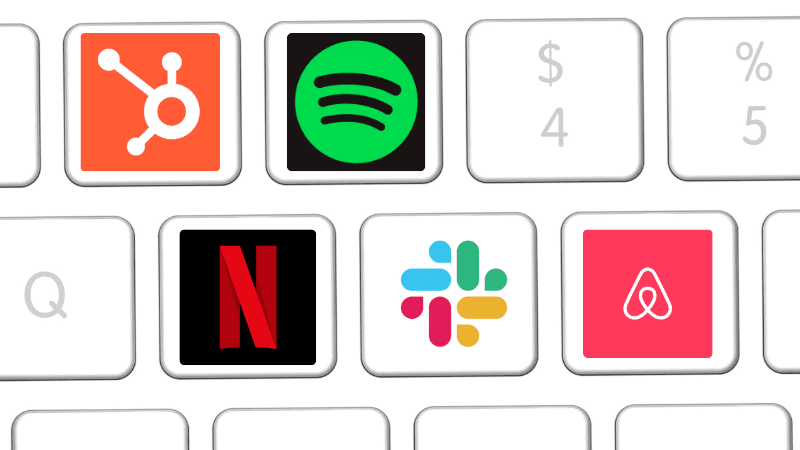SaaS companies live or die on their ability to scale revenue.
When domestic growth stalls, the next frontier (and investor expectation) is global expansion. Treating localisation as a strategic investment, rather than a vague cost centre lets you calculate ROI, avoid budget black holes, and unlock sustained SaaS growth.
In this article, you will learn about:
- What localisation is
- How to calculate localisation costs and incremental revenue reliably
- Model payback periods, NPV, and break-even scenarios
- How to optimise post-launch performance for maximum lifetime value
First, let’s examine why localisation is a proven catalyst for SaaS growth.
What is localisation ROI and why should SaaS companies care?
Understanding the localisation ROI is key to making the case for setting aside a budget and aligning translation efforts with overall business growth. Below is a streamlined approach focused on revenue-related KPIs and the full spectrum of cost inputs.
Set clear goals and identify the right KPIs
Localisation initiatives must start with a clear goal. Depending on whether the priority is revenue, engagement, retention, or cost control, different KPIs will signal success.

Tracking the right KPIs ensures you tie localisation efforts to business outcomes.
| KPI category | Key metrics | What it measures |
| Revenue KPIs |
| Financial performance in localised markets |
| SEO KPIs |
| Discoverability and organic acquisition |
| Engagement KPIs |
| Product-market fit and customer loyalty |
| Operational KPIs |
| Efficiency and translation quality |
Always compare localised vs. non-localised experiences. A/B testing or historical data can help isolate the impact of localisation.
Understand the true cost of localisation
Accurate ROI requires a full accounting of both direct and indirect expenses tied to localisation.
Common localisation cost inputs
| Cost Type | Examples |
| Translation | Per-word translation, LQA, post-edited machine translation |
| Tech Stack | TMS tools, CAT tools, API connectors |
| Human Resources | Project managers, i18n engineers, QA testers |
| Visual & UX Adaptation | Localising images, videos, screenshots |
| Training & Onboarding | Vendor or freelancer ramp-up time |
| Ongoing Maintenance | Content updates, UX tweaks, new feature localisation |
Total Cost = Initial investment + recurring updates + team/tool upkeep
Quantify the business impact

The value of localisation is best measured through incremental performance in key markets. KPIs should highlight revenue gains, user behaviour improvements, and cost efficiencies.
Revenue KPI breakdown
| KPI type | What to track | How to measure |
| ARR by Region | Post-localisation revenue uplift | Compare pre- and post-launch in each market |
| ARPU | Per-user revenue by locale | Segment revenue analytics by language/region |
| Conversion Rates | Funnel or landing page effectiveness | A/B test or compare with original versions |
| Churn Rate | Drop-off rates by market | Use locale-based product analytics |
Apply the ROI formula

Once value and cost are known, ROI can be calculated with:
Localisation ROI (%) = (Value generated – Cost of localisation) / Cost of localisation
According to the Localization Industry Standards Association (LISA), a $2.5 billion investment in software localisation produced $50 billion in global sales—an estimated ROI of 1,900%.
Qualitative benefits—such as improved brand perception, lower CAC, and increased user trust—should also be acknowledged, even if they aren’t immediately measurable.
Final recommendations for calculations
- Start with a pilot project and track performance carefully
- Tie KPIs directly to business metrics like ARR, CAC, and NPS
- Report ROI quarterly to internal stakeholders
SaaS use cases that prove the value of localisation

Several SaaS companies have demonstrated strong localisation ROI through focused efforts.
HubSpot: Targeted content, scalable return
A single localised blog post for the Spanish-speaking market brought in approximately $144,000 in annual recurring revenue from an investment of $1,500.
Spotify: Localised pricing for higher retention
Through A/B testing of pricing strategies by region, localised subscription offers by region (local payment methods, pricing, and culturally relevant content) → Spotify increased both user retention and revenue → +28% retention, +12% revenue.
Netflix: Language-first entertainment
Subtitles and dubbing in 30+ languages → global market dominance, with 33% sign-up boost from localised landing pages.
Airbnb: Adapting UI for regional markets
Localised adjustments to filters, layouts, and navigation increased Airbnb’s conversion rates in global markets. Airbnb’s Chinese market localisation resulted in a 700% increase in Chinese customers within a year.
Slack: Interface localisation fuels European growth
Slack’s investment in multilingual UI and onboarding flows accelerated adoption in France, Germany, and Spain. This aligned the product with user expectations and increased first-week engagement.
The high cost of ignoring localisation
For SaaS companies expanding internationally, neglecting localisation carries measurable risks.
CSA Research shows nearly 75% of users prefer to purchase products in their native language, and 40% won’t buy at all if information isn’t localised. When your product, documentation, or support content remains English-only, you’re likely to see:
- Higher bounce rate on poorly localized pages
- Lower conversion and trial-to-paid activation in non-English markets
- Increased churn from poor product engagement and onboarding friction
And the operational strain is just as severe. Without localised customer support:
- There are increased requests for assistance as users struggle to self-serve
- Resolution times are slower, raising support overheads
- Customer satisfaction (CSAT) and retention decline in key growth regions
Where the impact matters
| Area of impact | Business impact |
| Product Experience | Poor UX and lower activation in new regions |
| Customer Support | More tickets and lower CSAT due to language mismatches |
| Revenue Conversion | Abandoned carts and underperforming regional funnels |
| Operational Efficiency | Higher support costs due to inefficiency and escalations |
Companies that lack localised support resources may experience higher costs and less ROI.
Common mistakes SaaS companies make when measuring localisation ROI

Localisation can fail to deliver ROI—not due to the strategy, but due to errors in its execution.
1. Tracking effort over outcome
Metrics like “words translated” provide no insight into value. Focus on business impact.
2. Attribution gaps
Launching localised content alongside other campaigns? Track KPIs separately or with attribution modelling.
3. Inconsistent quality
Outdated or inconsistent translations erode trust. Maintain clean translation memory and clear brand voice.
4. Overusing AI translation
AI is valuable but requires editing. Customer-facing content without human QA is risky.
5. Misaligned KPIs
Track only the KPIs that tie in directly with your strategic goals – revenue, retention, or operational efficiency.
Source: Centus, How to measure localization ROI
From cost centre to revenue driver: changing the mindset
Localisation is frequently viewed as a cost – because its benefits touch multiple departments and aren’t always immediately visible. But when paired with outcome-based KPIs and tied to core business goals, it becomes a scalable growth strategy.
For SaaS companies, localisation leads to:
- Shorter sales cycles in new markets
- Better product engagement
- Lower CAC and improved CLTV
- Higher customer satisfaction
Companies that are global leaders treat localisation as an opportunity for growth, not a language task.
How the right localisation partner supports SaaS growth

While managing localisation in-house may seem efficient, internal teams often face bandwidth constraints and may miss critical market nuances. That’s where a professional localisation partner can make a real difference.
What a specialized localisation agency offers
- Strategic expertise: Guidance on language choices and market entry priorities
- Built-in SEO alignment: Localised keywords and optimised metadata from the outset
- User experience assurance: Ensures tone, layout, and brand voice resonate across cultures
- Speed and scalability: Seamless integration with CI/CD pipelines and multilingual launches
- Measurable results: Transparent insights into cost efficiency, performance and quality
The right partner doesn’t just excel in getting the job done, they help you navigate and scale international expansion with confidence.
Ready to localise with a partner trusted by global tech leaders?
For nearly a decade, some of the world’s most influential SaaS and platform companies have trusted Version Internationale to deliver high-impact localisation strategies tailored to complex, multilingual markets. We specialise in helping scale-ups and enterprise teams turn language operations into strategic growth levers – quickly, reliably, and with full ROI visibility.
If you’re expanding internationally, we’d be glad to walk you through the approaches that leading companies rely on, and how we’ve helped shape them.
Frequently asked questions
What’s the difference between translation and localisation?
Translation is about converting language. Localisation is about adapting the entire customer experience, including visuals, design, pricing, and cultural nuance, to the target market.
What’s a good starting point for SaaS localisation?
Begin with a high-potential market and localise only essential assets: product UI, landing pages, onboarding, and help documentation. Measure performance before scaling.
How long before we see ROI from localisation?
It depends on the scope. Pilot projects often show ROI within 3–6 months if KPIs are properly tracked.
Do we need a dedicated localisation team?
Not initially. A lean internal lead working with an expert LSP (language service provider) and TMS platform is often sufficient.
What’s the role of a TMS?
A translation management system automates translation workflows, centralises memories and glossaries, and reduces overheads through project tracking and collaborative working tools.
Gingout is a tool developed by our parent company: our proprietary TMS solution designed by Translators, for Translators.
It’s a comprehensive solution built to meet the exact needs of translation and localisation companies.
- Centralised dashboard tailored for teams of any size.
- Site licensing. No per-seat licences (avoid overpaying for software; pay a flat price regardless of team size)
- Multi-company support (manage multiple clients or organisations seamlessly within a single system)
Tired of managing complex translation projects manually or with prohibitively costly solutions? Let Gingout’s intelligent TMS handle the heavy lifting while you focus on strategy.
Click here to find out more about the tool.
Click here to request a demo.
For more information: essential resources on localisation ROI
If you’re building a business case for localisation, these are the sources we recommend:


